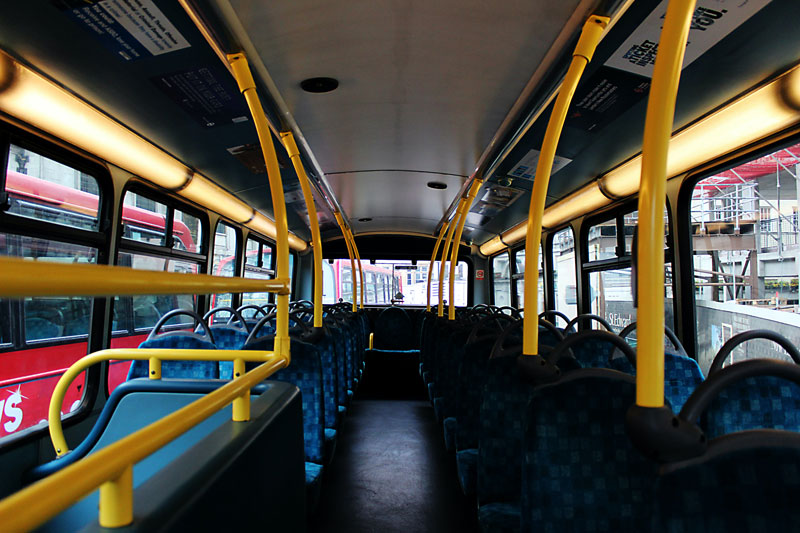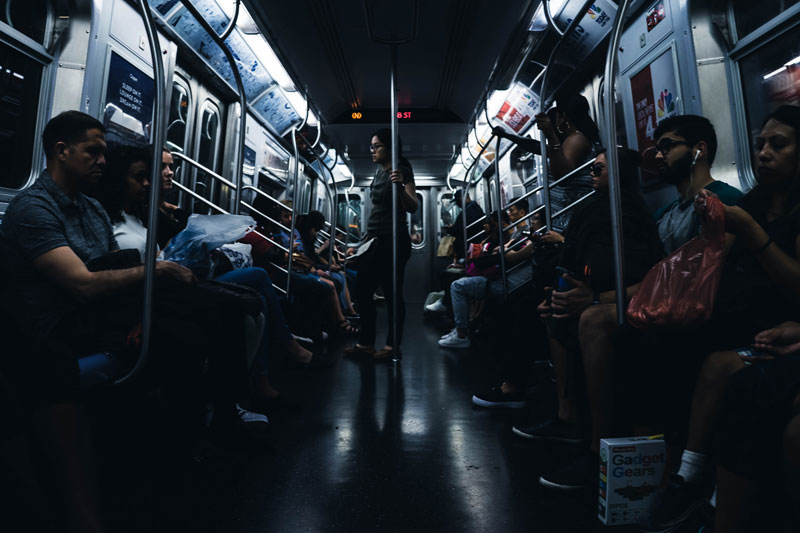Demand-Responsive Transport (DRT), Microtransit or On-Demand transport (ODT) has taken on many forms over the years. From dial-a-ride shuttle services, taxis and now App-based pick up and drop off options, transport services that are 'on-demand', are making life easier and more convenient for commuters.
Throughout this article we’ll explore how On-Demand Transport is working and what to expect when trying to change the fundamental traditions of transportation access.
What is On-Demand transportation?
On-Demand transport enables passengers to book their journey at a convenient time (during service operating hours), and to be picked up from an agreed location. Thanks to the assistance of technology, the option to book online or through an App allows for a flexible experience for both commuters and service operators within a matter of minutes.
Heads up: when it comes to On-Demand transport, we’ll be referring to mid-capacity (5-22 seat) vehicles operating within a designated zone to dynamically pick up and drop off passengers in a flexible manner.
On-Demand transport has been around for a while now—from phone services that allow you to dial-up and schedule a car, taxi services and sophisticated App-based services that connect commuters to fleets of privately owned vehicles.
In a sense, On-Demand transport has a broad remit— with the emergence of the smartphone enabling a seamless booking experience. Through our smartphones, we are unlocking a world of opportunities. We have the ability to commute to work by scooter, take a taxi, Public Transport in some capacity or by Single Occupancy Vehicles (SOV’s). It’s even possible in many cities to see where the local bus is from a smartphone and get picked up at a convenient location.
The underlying principle for On-Demand transport is that it is convenient and comes to you. In a way it has taken our vulnerability for instant gratification and decline in patience to serve up transport on a platter.
To improve the existing bus and rail networks, On-Demand has become the main focus for state transportation agencies across the globe.
But how does a more flexible, agile service improve the effectiveness of an existing and expensive legacy network? In our opinion, modes that service this need will provide the most value to a strained network.
In short, there is a huge opportunity to incorporate On-Demand Public Transport to reduce the cost of transport operation, improve patronage and increase plain old 'bums on seats'.
What’s a smart-bus?
A smart bus is one that will adapt routes and schedules to pick up passengers and at the same time not degrade the onboard passenger experience. Now, this seems counterintuitive as people want the assurance a fixed route service gives you—with known stops and destinations.
But here’s a commonality between commuters and bus operators—no one wants to waste their time. Passengers hate waiting for the bus, and drivers hate wasting time and fuel by going to empty bus stops.
The fundamental difference between fixed-route and On-Demand Public Transport is that the service can be truly designed around the passenger demand—not a supply that forces demand through specific corridors.
An improvement on the status quo is On-Demand transport’s claim. The ability to connect people to mass transit in a more convenient manner, scheduling updates in real-time, integrated timetables and flexible pickup and drop off locations make this service a superior experience to the norm.
As more elements of our lives become automated, On-Demand or fuelled by our reliance on instant gratification, it’s only logical that transportation services like smart buses follow suit. On-Demand Buses paint a vision of the future that is streamlined, convenient, reliable and more importantly—visible to the passenger.
By improving the visibility to smart buses, passengers can benefit from increased productivity by knowing exactly when and where the bus will show up—no more waiting in the rain at a bus stop!

How will On-Demand transportation change how Public Transport is viewed?
Unfortunately, in some cultures, the mode of transport utilised also creates a predefined perception of who you are. For example, owning and being able to afford the upkeep of a private vehicle is considered as an indicator of wealth in many developing nations.
By creating a more flexible nature to Public Transport we open up the opportunity to serve more of the population and create experiences that ultimately lead to a change of behaviour. In this regard, it can create new opportunities for enterprise and development. Providing more coverage for local commuters and flexible scheduling not only creates recruitment and retention opportunities but allows local governments to test their traditional views of suitable infrastructure requirements to maintain a car park to vehicle ratio.
How does On-Demand transport enhance the passenger experience?
Underneath the features, benefits and hype of the burgeoning market—at the centre of On-Demand Public Transport is a fine balance of convenience and vehicle efficiency.
Ultimately Transit Agencies want to create something so convenient and experiential that it outweighs current transit mode choices, and, at the same time is a more efficient, cost-effective and sustainable mode of transportation to run compared to current options.
This can be seen with major Transportation Network Companies (TNC) as they struggle to actually reduce overall vehicle trips and in some cases contribute to traffic congestion by having such a personalised service that it only encourages the underutilisation of a vehicle.
So herein lies the challenge: How do you create a compelling reason to increase shared trips and get more people on the public transportation network?
You improve the overall convenience of the service and at the same time provide better utilisation of an existing fleet. Two things that don’t really go together when thinking of improving experiences.
Understanding the surrounding environmental factors influencing the daily decisions of commuters leads to designing the right type of On-Demand model most likely to succeed. Many choose to simulate a service ahead of deployment. To ensure real-world outcomes are replicated in a controlled and inexpensive manner.
At the end of the day, communication with existing and potential passengers is key.
Ensure that the benefit is clear for the commuter, effectively giving them back their time in exchange for an improved experience.
For example, benefits of On-Demand transport for passengers include:
- substituting wait times for productive activities whilst seeing in real-time the vehicle on-approach
- reducing poorly lit active commutes during the evening (not walking in the dark)
- no requirement to first find then pay for parking before changing transport modes (multi-modal commutes)
All of these are valid reasons why a commuter would modify their behaviour and it is these types of factors translated into a feature-set within a convenient and intuitive App that can have a large impact on the design of a service.
These benefits all need to be communicated with potential passengers in order to create an accurate sense of understanding. Not only does on-demand transport promote ongoing improvements to the passenger experience, but transport operators will also benefit from having a connected fleet with optimised vehicle occupancy with a reduction in unnecessary costs. On-Demand transport (ODT) is emerging as a major technology in regards to contributing to increased efficiencies within future transportation networks. It shifts that balance back in favour of the commuter and provides them with an opportunity to access major transport infrastructure in a more convenient manner.

A shift is occurring, one that puts the balance of power back in the hands of the commuter. Allowing the passenger to choose the service they want to use is at the core of any On-Demand Public Transport service. Furthermore, creating an experience that is compelling and conforms to the behaviour of the passenger is a huge attraction for On-Demand transport emerging as a primary mode of Public Transportation.
%20(1).jpg)
